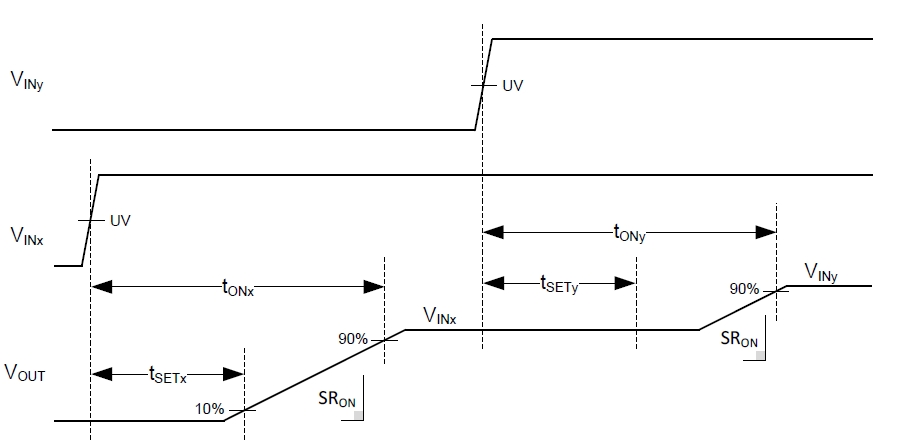JAJSG28F august 2018 – august 2020 TPS2120 , TPS2121
PRODUCTION DATA
- 1
- 1 特長
- 2 アプリケーション
- 3 概要
- 4 Revision History
- 5 Device Comparison Table
- 6 Pin Configuration and Functions
- 7 Specifications
- 8 Parameter Measurement Information
-
9 Detailed Description
- 9.1 Overview
- 9.2 Functional Block Diagram
- 9.3
Feature Description
- 9.3.1 Input Settling Time and Output Soft Start Control (SS)
- 9.3.2 Active Current Limiting (ILM)
- 9.3.3 Short-Circuit Protection
- 9.3.4 Thermal Protection (TSD)
- 9.3.5 Overvoltage Protection (OVx)
- 9.3.6 Fast Reverse Current Blocking (RCB)
- 9.3.7 Output Voltage Dip and Fast Switchover Control (TPS2121 only)
- 9.3.8 Input Voltage Comparator (VCOMP)
- 9.4 TPS2120 Device Functional Modes
- 9.5 TPS2121 Device Functional Modes
- 10Application and Implementation
- 11Power Supply Recommendations
- 12Layout
- 13Device and Documentation Support
- 14Mechanical, Packaging, and Orderable Information
パッケージ・オプション
デバイスごとのパッケージ図は、PDF版データシートをご参照ください。
メカニカル・データ(パッケージ|ピン)
- YFP|20
サーマルパッド・メカニカル・データ
発注情報
9.3.1 Input Settling Time and Output Soft Start Control (SS)
The TPS212x will automatically select the first source to become valid (INx >UV and INx <OV). The external capacitor (CSS) will then be used as a timer to wait for the input to finish setting (tSETx). When the settling timer has expired, CSS will continue to charge and set the output slew rate (SRON) for a soft start. After the total turn on time (tONx), soft start will not be used again for INx until it ceases to be valid (INx <UV or INx >OV).
When the second source becomes valid (INy >UV and INy <OV), the external capacitor (Css) will be used again for a second settling time (tSETy). After tSETy, the TPS212x will decide whether to continue sourcing the first source, or switchover to the second source. If the second source is selected at the end of tSETy, then CSS will be reused to set the output slew rate (SRON) for a second soft start. After the total turn on time (tONy), soft start will not be used again for INy until it ceases to be valid (INy <UV or INy >OV).
 Figure 9-3 Settling and Soft Start Timing
Figure 9-3 Settling and Soft Start TimingIf INy becomes valid before the end of tONx, tSETy will be delayed and start after tONx has ended.
If INy is not selected during tSETy, a second soft start will not take place, skipping tONy, and CSS will be retired until one of the inputs ceases to be valid.